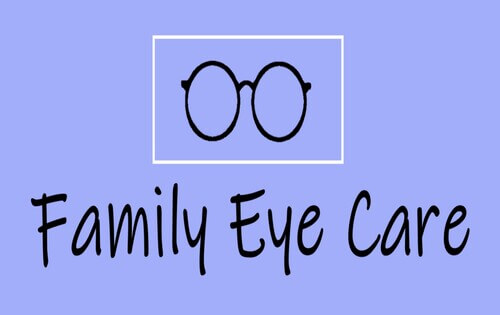Andalusia Pediatrics: Compassionate Care for Your Children
The Benefits And Drawbacks of Different Refractive Surgical Procedures for Improved Eyecare

LASIK Surgery
LASIK surgical treatment is a typically done refractive treatment that aims to fix vision problems such as farsightedness, astigmatism, and nearsightedness. Throughout the procedure, a slim flap is developed on the cornea, and a laser is made use of to improve the underlying cells, fixing the refractive error.
One of the primary advantages of LASIK surgical treatment is the fast renovation in vision experienced by several individuals. It is essential for people considering LASIK surgical procedure to undergo a comprehensive examination by an eye care professional to identify if they are appropriate candidates for the treatment.
PRK Treatment
The PRK procedure, additionally understood as Photorefractive Keratectomy, is a kind of refractive surgery that intends to fix vision concerns comparable to LASIK surgery. Unlike LASIK, which entails developing a flap in the cornea, PRK functions on the surface area layer of the cornea.
One of the benefits of PRK over LASIK is that it gets rid of the risk of flap-related difficulties given that no flap is produced during the surgical treatment. This can be valuable for individuals with slim corneas or those involved in get in touch with sporting activities where eye injury is an opportunity. Nevertheless, the healing time for PRK is commonly longer compared to LASIK, as the outer layer of the cornea needs time to restore after the treatment. Regardless of the longer recuperation duration, PRK can be a suitable choice for individuals looking for vision adjustment surgical procedure.
SMILE Surgical Procedure
An advanced refractive surgery technique getting popularity in the field of ophthalmology is SMILE Surgical treatment. Tiny Incision Lenticule Removal (SMILE) is a minimally invasive procedure that corrects vision by improving the cornea utilizing a femtosecond laser. Unlike traditional LASIK surgery, SMILE Surgical procedure involves producing a tiny cut in the cornea to extract a lenticule, which results in much less disturbance to the corneal structure and potentially much faster healing times.
One of the key benefits of SMILE Surgery is its capability to deal with nearsightedness (nearsightedness) and astigmatism with high precision, causing excellent visual outcomes for people. The minimally intrusive nature of the treatment additionally minimizes the danger of problems such as dry eye syndrome, making it a beneficial option for people seeking refractive surgical procedure.

LASEK Technique
Having actually checked out the benefits and factors to consider of SMILE Surgical treatment, an additional significant refractive surgical treatment strategy worth examining is the LASEK Technique. LASEK, which represents Laser-Assisted Subepithelial Keratectomy, is a type of laser eye surgical treatment that intends to remedy refractive mistakes such as myopia (nearsightedness), hyperopia (farsightedness), and astigmatism.
Unlike LASIK, LASEK does not include creating a corneal flap. Rather, throughout a LASEK procedure, the specialist utilizes a watered down alcohol remedy to loosen the slim external layer of the cornea, called the epithelium. This layer is then carefully relocated apart to allow the laser to reshape the underlying corneal cells. When the cornea has been improved to the wanted level, the epithelial layer is rearranged.
Among the primary benefits of LASEK is that it can be ideal for individuals with thin corneas who may not be great prospects for LASIK. In addition, LASEK typically causes marginal post-operative pain and a quicker recuperation time contrasted to PRK. Nonetheless, the visual recuperation process with LASEK may be a little longer than with LASIK.
Implantable Get In Touch With Lenses
Implantable Get in touch with Lenses use a lasting vision adjustment option for people seeking an option to traditional get in touch with lenses or glasses. These lenses, likewise called phakic intraocular lenses, are surgically inserted right into the eye to correct refractive errors such as nearsightedness (nearsightedness), hyperopia Clicking Here (farsightedness), and astigmatism. neurologist Andalusia. Unlike traditional get in touch with lenses that remain on the surface area of the eye, implantable call lenses function within the eye itself, providing clear vision without the requirement for day-to-day maintenance or removal
Among the essential advantages of implantable contact lenses is their permanence. Once inserted, they can stay in the eye indefinitely, supplying consistent and stable vision correction. In addition, these lenses can be a superb alternative for individuals that are bad candidates for laser eye surgery or who favor a reversible vision adjustment procedure.
However, implantable contact lenses do carry some threats, including the potential for cataracts or raised eye pressure. It is critical for individuals considering this alternative to consult with an eye treatment professional to establish if implantable get in touch with lenses are the best option for their particular requirements and eye wellness.
Verdict
In verdict, each kind of refractive surgical treatment has its very own advantages and downsides. LASIK surgical procedure is prominent for its fast recovery time, while PRK treatment may be appropriate for people with thin corneas.

On The Whole, SMILE Surgical procedure presents a promising option for individuals looking to boost their vision via refractive surgery.